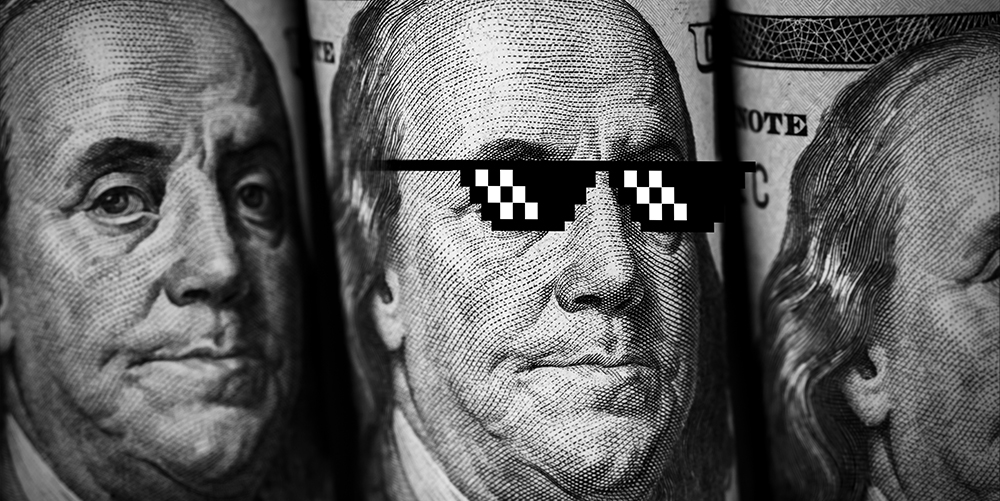Dollar demise predictions may be premature

While the administration’s actions may erode the currency’s dominance, it is not going anywhere soon, writes Mark Sobel, US chair, OMFIF.
The dollar goes up and down in foreign exchange markets. That is the nature of floating exchange rates. But why it is doing so is far more important.
Usually, the dollar fluctuates in response to macroeconomic developments, and in particular shifts in interest differentials and relative monetary policy expectations. This is evident in the euro-dollar relationship, the most widely traded currency pair (Figure 1). Notably, the dollar plummeted towards 1.60 per euro as the Federal Reserve cut rates far more quickly than the European Central Bank ahead of the 2008 financial crisis.
Figure 1. The dollar is down against the euro
Source: Federal Reserve
Wide dollar fluctuations in response to cyclical and monetary policy developments should be distinguished from questions about dollar dominance or more fundamentally the future of the international monetary system.
Since President Donald Trump’s inauguration, the dollar is now down 12% against the euro. US interest rate differentials have widened versus the euro – the Fed Funds rate is now 100 basis points higher than the ECB deposit rate. US tariff hikes have rendered foreign exports to the US less competitive. Normally, those factors would bolster the dollar.
But the president has ushered in protectionist trade policies, raising the average effective tariff at this time from around 2% to 16% by some estimates. His ‘big beautiful bill’ portends a significant expansion in debt and worsening in the US fiscal trajectory. His comments about Canada as a 51st state, the European Union being created to harm America, questioning the autonomy of Panama and Greenland and perceived support for Russia over Ukraine have cast doubts on America’s reliability as a trusted ally and partner. His attacks on the Fed are seen as undermining institutions while other actions call into question the administration’s commitment to the rule of law.
These developments have weakened confidence in the dollar, led market participants to raise questions about its ‘safe-haven’ status and are reportedly the primary reason underlying the dollar’s depreciation rather than cyclical factors.
While the administration's actions may well erode dollar dominance, the demise narratives are premature. Predicting exchange rates is a fool’s errand. Stories about the need to supplant the dollar have circulated for over 60 years, sometimes in the guise of the ‘exorbitant privilege’. The dollar has gone through major ups and downs and yet remained dominant. Markets may not be selling underlying dollar assets but rather hedging overweight dollar exposures. The dollar still remains remarkably strong on a real trade-weighted basis.
Figure 2. Dollar still strong on a real trade-weighted basis
Source: Federal Reserve and author adjustments
The debate about dollar dominance in fundamental respects misses the point. The real debate should be about how America should preserve the basis properties underpinning dollar dominance that lie at the heart of the country’s economic strength – sound macroeconomic policies, trade and capital market openness, a large and dynamic economy and respect for institutions and the rule of law. If the US can protect those properties, Americans will prosper amid a floating dollar. If the US doesn’t, dollar dominance will be the least of our worries, as I and Steve Kamin have repeatedly pointed out.
Dollar demise proponents must also answer the question of what the alternative is. Large portfolio managers only re-benchmark allocations gradually. The euro’s regional role may rise, but its global role remains constrained due to the lack of euro safe assets and fragmented capital markets, notwithstanding ECB cheerleading. Even if the renminbi is now more widely used for trade settlement, its global role faces enormous constraints due to capital controls, a lack of convertibility, the Chinese economy’s huge headwinds and fledgling capital markets. Official gold purchases are rising but there are limits to the metal’s use in portfolios.
Absent sound US policy and a convincing case for other currencies to play a significantly strengthened economic and financial role, global foreign exchange market volatility can be expected to rise along with home bias.
Mirror, mirror on the wall, which is the least ugly currency of all?

